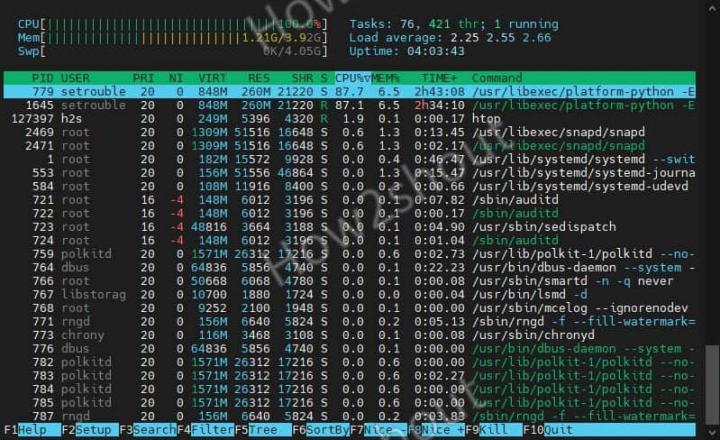

This means that if now F9 is designed to kill a process the shortcut k is still available. This seems to be trivial but is quite useful while starting to use the tool or for people not using it often.Īs htop is based on the same principle than top, it also integrates almost the same shortcuts. Then an other good idea in the tool is that unlike top the main functions are displayed at the bottom. In addition this part can be fully customized through the Setup (F2 or shift + s) It provides a pretty good overview using colors, which is close from the principle used in nmon and really easy and fast to read. The first point I found nice once I started htop was the visual representation of the server load. In my examples below, I have started htop by filtering on the oracle user to get an eye on my databases processes. Note that if you want to be able to display the files used by a process within htop, then lsof must be installed too. However if like me you do not have it in a repo, you can easily find the binaries and sources on the project web site įor my tests, I installed it on Oracle Enterprise Linux 5.7 using the RHEL binaries Htop is available on most of the Linux distribution and even already included in several repositories such the canonical or the EPEL one. Pretty good visual representation of CPU, Memory and Swap usage.Actions on multiple processes through tagging using the space bar.Kill or renice processes (already in top).Scroll the process list horizontally and vertically using the arrow keys.Here is a brief summary of its main functions: It integrates most of the top functionnalities and add some new one. In my point of view it is a pretty handy entry point for performance analysis on Linux. It can be seen as an “enhancement” of the traditional top tool that is better known. Htop is an interactive process viewer developed by Hisham Muhammad. To get started with performance checks and analysis, a interesting utility is available: htop What is htop However trying to dig in processes analysis and looking for files and processes relations may be quite painful. In order to analyse such cases several tools and utilities, like top, nmon, fuser or lsof are available under Linux. I’m pretty sure that most of you already struggled with some low performance systems.


 0 kommentar(er)
0 kommentar(er)
